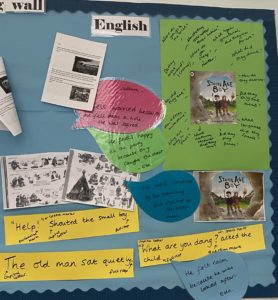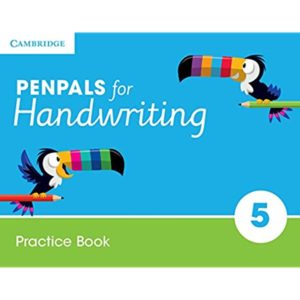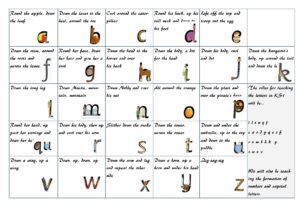 Our English Intent
Our English Intent
‘When I read great literature, great drama, speeches, or sermons, I feel that the human mind has not achieved anything greater than the ability to share feelings and thoughts through language.’ James Earl Jones
At Holly Park, we intend to foster a lifelong love of reading, writing and discussion amongst all children at Holly Park.
We aim to inspire a habit of reading widely and often and intend children to be exposed to a wide range of authors and genres in order for them to develop individual tastes and preferences.
We also aim for our pupils to be able to see their own lives reflected in the books they are exposed to by providing a diverse range of texts; representative of our school community and the different families that are a part of it.
Click on the link to see the core texts that our pupils will be studying this year: HP Core Texts 23-24
We want our children to build a wide vocabulary throughout their time at school; to have a love of language and to enjoy experimenting with words and their power. We intend for the children to develop a good understanding of a range of text types and to experience writing for a variety of audiences and purposes.
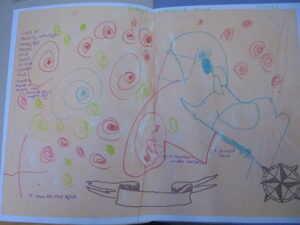 We aim to teach phonics, spelling, punctuation and grammar skills in an engaging and purposeful manner and provide our children with the tools necessary to express themselves effectively. We also recognise the importance of cultivating an ability to communicate; we want our children to display empathy, be able to express their thoughts and feelings independently and be able to respond to and build on the ideas and opinions of others.
We aim to teach phonics, spelling, punctuation and grammar skills in an engaging and purposeful manner and provide our children with the tools necessary to express themselves effectively. We also recognise the importance of cultivating an ability to communicate; we want our children to display empathy, be able to express their thoughts and feelings independently and be able to respond to and build on the ideas and opinions of others.
We believe that enthusiasm for and a secure basis in these literacy skills are crucial to a child’s education and will equip them with vital skills for the future.
Our English Curriculum is made up of:
- Writing
- Reading (including phonics)
- Spelling
- Handwriting
- Punctuation
- Grammar
This page is about writing, spelling, handwriting, punctuation and grammar.
Please see the reading page for more information about reading and phonics.
Here is an overview of all the writing elements from the relevant sections of our Holly Park Curriculum Map: Writing Curriculum Map
Writing
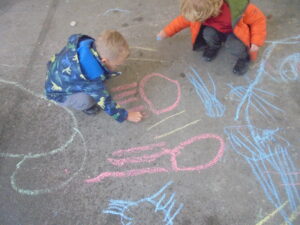 Preparation for writing begins in EYFS where children develop the gross and fine motor skills required for core stability, control and pencil grip. They are given continuous opportunities to mark-make using a wide range of tools and materials of different sizes. The development of language skills is also a vital part of preparing the children to write and they are encouraged to explore sounds, ascribe meaning to their mark-making, join in with songs and rhymes and orally retell stories. Their school environment is set up to allow them to practise these emerging writing skills across many different areas of the curriculum. The children are then taught a latter patter to help them to form each letter correctly.
Preparation for writing begins in EYFS where children develop the gross and fine motor skills required for core stability, control and pencil grip. They are given continuous opportunities to mark-make using a wide range of tools and materials of different sizes. The development of language skills is also a vital part of preparing the children to write and they are encouraged to explore sounds, ascribe meaning to their mark-making, join in with songs and rhymes and orally retell stories. Their school environment is set up to allow them to practise these emerging writing skills across many different areas of the curriculum. The children are then taught a latter patter to help them to form each letter correctly.
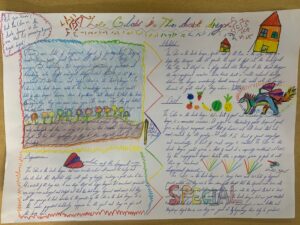 As their writing skills develop further, children are given a range of high-quality stimuli for their writing- whole texts, extracts, poems, real-life events, films etc. Writing tasks may be presented in many different ways, for example as stories, leaflets, newspapers or letters. Children will be aware of the audience and purpose for their writing and will craft their work with this in mind, alongside any punctuation and grammar objectives being focused upon. The teacher will model a piece of writing with the class and the children will be given the opportunity to plan, draft, proof-read and edit their writing before presenting and evaluating the effectiveness of the piece at achieving the desired outcome.
As their writing skills develop further, children are given a range of high-quality stimuli for their writing- whole texts, extracts, poems, real-life events, films etc. Writing tasks may be presented in many different ways, for example as stories, leaflets, newspapers or letters. Children will be aware of the audience and purpose for their writing and will craft their work with this in mind, alongside any punctuation and grammar objectives being focused upon. The teacher will model a piece of writing with the class and the children will be given the opportunity to plan, draft, proof-read and edit their writing before presenting and evaluating the effectiveness of the piece at achieving the desired outcome.
This is part of our sequence for writing.
The stages are:
- Immersion
- Analysing the features of the text type
- Working on a particular grammar focus
- Planning
- Writing
- Editing
- Publishing
- Teacher feedback
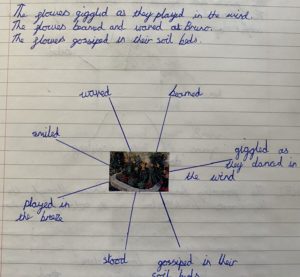 At Holly Park we ensure that children write for different purposes and audiences through a range of text types.
At Holly Park we ensure that children write for different purposes and audiences through a range of text types.
The text types are:
- Narrative
- Biographies
- Non-chronological reports
- Recount/Diary
- Poetry
- Letter
- Instructions
- Explanation
- Play scripts
- Newspaper reports
- Discussions/Balanced Argument
- Persuasion
Our Progression of writing at Holly Park: Progression in Writing at Holly Park Primary School
Here is our writing strategy: Writing Strategy
Some examples of our writing learning organisers:
- Year 1 Recount
- Year 2 Instructions
- Year 3 Narrative
- Year 4 Explanation
- Year 5 Biography
- Year 6 Discussion
Spelling
Spelling progresses through phonics teaching in Reception and Year 1 and on to phase 5 in Year two. This moves on to dedicated spelling lessons every week in KS2.
- Here is the progression of skills for spelling: Spelling Progression of Skills
The spelling lessons are based on ‘No Nonsense spelling’ (which links to the national Curriculum expectations for each year group) on the National Curriculum spelling words for each year group and also on appropriate topic words for each half term. In this way they learn key words that are appropriate for their year group and also learn spelling rules for their year group. Children are encouraged to develop suitable methods to learn and practice spellings.
Spellings are shared with parents every half term so that they can support their children to learn the spellings at home. There is a a half termly spelling test.
Here are some examples of one of the half termly spellings for different KS2 year groups:
- Year 3 Spelling Words Summer Term 1
- Year 4 – Summer Term 2
- Year 5 Spelling Words – Summer Term 2
- Year 6 Spelling Words Summer Term 1
Handwriting
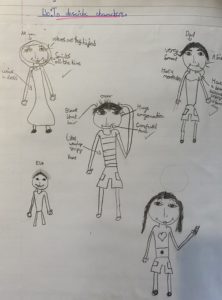 At Holly Park we follow the Penpals handwriting scheme. This runs from nursery to Year 6.
At Holly Park we follow the Penpals handwriting scheme. This runs from nursery to Year 6.
- Here is the progression of skills for handwriting: Handwriting Progression of Skills
Our aim is that pupils will be supported to develop a handwriting style which is clear, joined and fluid. Inevitably some will be neater than others, but each child can acquire a consistent and fluent style.
Although there are many opportunities to practice handwriting across the curriculum, we will also provide regular lessons for teaching and revising these skills. The frequency and length of these lessons will vary according to the age and competence of the children. Formal handwriting skills will be taught regularly and systematically through the use of the PENPALS Handwriting scheme (Cambridge University Press).
Penpals for Handwriting is a complete handwriting scheme for 3–11 year olds that offers clear progression through five developmental stages:
- physical preparation for handwriting (EYFS)
- securing correct letter formation (Reception & Year 1)
- beginning to join along (Year 1 and Year 2)
- securing the joins and practicing speed (Lower KS2)
- fluency and developing a personal style (Upper KS2)
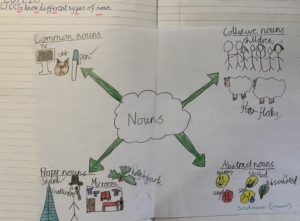 Throughout the key stages children will also be taught to think about age appropriate presentation of their work.
Throughout the key stages children will also be taught to think about age appropriate presentation of their work.
In EYFS pupils will be taught a letter patter. A letter patter are words or sentences that the children say out loud as they write the letter. The letter patter helps with correct letter formation.
Here is our letter patter:
It is important that children hold their pencil correctly and ensure their posture is correct. Pencil hold
- Pencil held between finger and thumb
- Middle finger provides extra support
Posture
- Feet flat on the floor
- Head up, not resting on the desk or hand
- Paper at the correct angle
- Spare hand steadies the paper
Reception
We begin at school with letters being written separately (not joined up yet).
Year 1
During this school year children will begin to join some pairs of letters within a word.
They will be introduced to two types of joins:
- Diagonal joins
- Horizontal joins
Year 2
The main aim this year is for the children to become fluent and develop an automatic style. New joining letters this year are:
- Joins from ‘q’
- Joins to and from ‘r’
- Joins to and from ‘s’
- Joins from ‘f’
Year 3
Children will refine their handwriting and make sure that the size and proportions of all letters and the spaces between letters and words are consistent.
New joins introduced are:
- Joins from ‘p’ and ‘b’ to a short letter,
- an ascender and an anti-clockwise letter
Year 4
In Year 4 children will begin to slope their handwriting and will keep ascenders and descenders parallel.
Children will begin to practise writing at increased speed and will be introduced to the print alphabet for captions, headings, labels and posters.
Year 5/6
By this stage children should be secure at joining and able to use joined up writing for most of their work.
Children will be experimenting with slopes and will have a more mature and comfortable style.
Attached is a useful information sheet for parents: Penpals – for parents
Useful English links:
- National Curriculum English programmes of study KS1 & 2
- National curriculum vocabulary, grammar and punctuation
- National curriculum spelling guidelines and word lists

